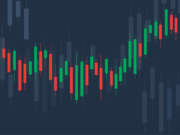The fanfare surrounding stock splits often masks a more complex reality.
Stock splits consistently generate buzz among retail investors. The prospect of owning more shares at a lower price per share creates a psychological boost that often drives pre-split rallies. Yet the post-split performance often tells a more nuanced story that deserves investor attention.
I’ve analyzed three recent high-profile stock splits to uncover what they reveal about market psychology, valuation dynamics, and the factors that truly drive long-term returns. The results offer valuable lessons for investors tempted to chase split announcements or make investment decisions based primarily on these corporate actions.
Broadcom (AVGO): First-Time Split Drives Continued Momentum
When semiconductor and software powerhouse Broadcom announced its first-ever stock split in June 2024, it marked a significant milestone for a company that had seen its shares surge to around $1,500 on the back of AI-driven demand. The 10-for-1 split implemented on July 15, 2024, made the stock more accessible while signaling management’s confidence in the company’s growth trajectory.
Since the split, Broadcom shares have gained approximately 18% over ten months – an impressive performance that reflects the company’s strengthening market position in AI infrastructure. However, this headline number masks considerable volatility along the way.
The stock peaked in early February 2025 at $251.88 before getting caught in a broader AI sector selloff that erased up to 45% of its value over just two months. This dramatic swing highlights an important reality: even after a split, sector sentiment and broader market dynamics remain primary drivers of short-term price action.
What’s particularly interesting about Broadcom’s post-split journey is the evolving valuation story. While its current P/E ratio of 97 appears expensive at first glance, the forward P/E of just 30 looks remarkably reasonable for a leading AI beneficiary. With analysts projecting 36% earnings growth this year and 19% in 2026, Broadcom’s post-split performance suggests that fundamental business strength ultimately matters more than the split itself.
Nvidia (NVDA): When Fundamentals and Stock Price Diverge
Nvidia completed its 10-for-1 stock split on June 10, 2024, amid tremendous enthusiasm for anything AI-related. Yet nearly a year later, the stock has essentially moved sideways – an outcome few would have predicted given the company’s dominant position in AI acceleration.
This lack of price appreciation appears puzzling when examining Nvidia’s fundamental performance over the same period:
- Revenue has surged 36%
- Net income has jumped 37%
- Diluted earnings per share have grown by 38%
The disconnect between operational excellence and stock performance offers a powerful lesson about the impact of starting valuations. Despite Nvidia’s stellar results, its P/E multiple has compressed significantly, falling from around 80x to approximately 40x today – still premium but now at one of its lowest levels in five years.
This multiple compression has effectively canceled out the earnings growth that would normally drive the stock higher. More importantly, it illustrates how even the strongest company can see its stock temporarily stall if investor expectations and valuations become too stretched.
For long-term investors, Nvidia’s post-split journey actually presents an increasingly compelling opportunity. The company continues delivering exceptional results while its stock consolidates at a more reasonable valuation – potentially setting the stage for the next leg higher when sentiment recovers.
Palo Alto Networks (PANW): When Valuation Trumps Momentum
Cybersecurity leader Palo Alto Networks announced a 2-for-1 stock split on November 20, 2024, after an incredible 181% run from the start of 2023. Since it began trading at its split-adjusted price on December 16, 2024, the stock has declined approximately 7% – a disappointing outcome compared to the pre-split momentum.
This post-split weakness reflects several factors beyond the split itself. Market volatility increased significantly in early 2025 amid heightened geopolitical tensions, recession concerns, and escalating U.S.-China trade disputes. However, the primary headwind appears to be valuation-related.
Even after its recent pullback, Palo Alto Networks trades at 58 times forward earnings – a substantial premium for a company expected to grow earnings at an average annual rate of 19% long-term. This mismatch between valuation and growth expectations helps explain why the stock has struggled despite the initial enthusiasm surrounding its split.
The Palo Alto situation illustrates a crucial insight: stock splits tend to occur when companies are doing well and share prices have already seen substantial appreciation. This timing often coincides with stretched valuations, creating a challenging setup for immediate post-split performance regardless of fundamental business strength.
Key Lessons for Investors
Analyzing these three splits reveals several principles that can help investors make more informed decisions when approaching companies that announce or implement stock splits:
- Fundamental growth remains paramount. Nvidia’s sideways movement despite exceptional operational performance shows that even the strongest companies need valuation support to see stock price appreciation.
- Starting valuation matters tremendously. Palo Alto Networks’ post-split struggle highlights how premium valuations can limit upside even when business fundamentals remain solid.
- Sector dynamics often override split effects. Broadcom’s volatile journey demonstrates how industry-wide sentiment shifts can dramatically impact even companies executing at a high level.
- Timeframe considerations are crucial. While Nvidia has moved sideways since its split, the substantial multiple compression may be setting the stage for stronger returns going forward as earnings continue growing into the valuation.
- Psychological factors influence short-term trading. All three companies saw significant price action around their splits, reflecting how these corporate events can temporarily distort normal market dynamics.
For long-term investors, the key takeaway is clear: while stock splits often create short-term trading opportunities, they fundamentally don’t change a company’s business prospects or intrinsic value. Investment decisions should remain anchored in fundamental analysis, valuation considerations, and assessment of competitive positioning rather than being driven by split announcements themselves.
The next time a high-profile company announces a stock split, consider it an invitation to evaluate the business fundamentals more deeply rather than a standalone reason to invest. The post-split performance of Broadcom, Nvidia, and Palo Alto Networks demonstrates that what matters most is not the split itself, but the underlying business quality, growth trajectory, and starting valuation at the time of your investment.











